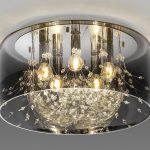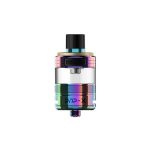Some children may simply have difficulty learning certain subjects, but the current system, in a sense, prompts school officials to encourage their parents to have the children diagnosed with ADHD. The higher the number of disabled kids in the school, the more funding the school can apply for. Some teachers might also have difficulty with students who have a different style of learning. If the child is a visual learner and the teacher is not, perhaps the child is not being taught in a way he or she can learn from. Before diagnosing the child with ADHD, several questions need to be answered, such as is the child too active? Bored?
Does the child suffer with dyslexia or a different learning pattern? It can be a behavior problem, problems at home, or frustrations with the teacher’s style. If we went to a conference where the speakers taught in a way we can’t learn, we would be frustrated and would misbehave, we’d get up and leave or chat to the person sitting next to us. The traditional medical model, however, seems to follow the cookie-cutter principle. The diagnosis of ADHD is based on a questionnaire. But this is not enough. True adhd test patients have other signs, tics, tremors, balance or postural problems, or unusual sensitivity to touch, movement, sights, or sounds. Unfortunately, although medications can keep ADHD under control, they don’t cure it.
Eighty percent of patients have ADHD features in adolescence, and up to 65 percent maintain them in adulthood. Our office offers a non-drug and non-invasive integrative functional neurologic rehabilitative treatment alternative for ADHD patients that targets the underlying problems, not just symptoms. Motor activity, especially development of the postural muscles, is the baseline function of brain activity. Anything affecting postural muscles will influence brain development. Musculoskeletal imbalance will create imbalance of brain activity, and one part of the brain will develop faster than the other, and that’s what’s happening in ADHD patients.
Chiropractic neurologists are trained to identify the under-functioning part of the brain and find treatments to correct the problem, to help that hemisphere grow. On every patient, we perform a brain function exam. We test visual and auditory reflexes through, for example, flashing light in the eye, or asking patients to listen to music in one or the other ear. When the problem is identified, patients are placed on a treatment program, and most of the therapies can be done at home. Patients are asked to smell certain things several times a day … or wear special glasses. We also focus on their individual problems.
Some children, for example, have difficulty with planning, organization, and coordination, so they benefit from timing therapies. They learn to clap or tap to the metronome, perform spinning and balancing exercises. Although currently no studies comparing chiropractic neurological and drug treatment for ADHD are available, chiropractic neurologists are compiling the data. We test children before they start the treatment and then every three months. Within the first three months, the children get a two grade level increase on average, which is pretty dramatic. With children on medications, the improvement in academic performance is short term and lasts only as long as they take the medication. Our programs change brain function and the improvement doesn’t go away.
















